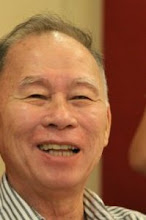Search
Archives
-
▼
2018
(21)
-
►
April
(15)
- HORACIO DE LA COSTA
- THE ROLE OF RELIGIOUS WOMEN IN ASIA TODAY
- Dr. Google
- THE FREEDOM OF THE CITY by Horacio de la Costa S.J.
- RIZAL AND THE ATENEO
- PHILIPPINE JESUITS IN LOYOLA HEIGHTS CAMPUS
- THE ATENEO MUNICIPAL DE MANILA by Horacio de la Co...
- THE EXPULSION AND RETURN OF JESUITS IN THE PHILIPP...
- FIRST 100 YEARS OF JESUITS IN THE PHILIPPINES Part 3
- FIRST 100 YEARS OF JESUITS IN THE PHILIPPINES Part 2
- 200 Years of Jesuits in the Philippines
- FIRST 100 YEARS OF JESUITS IN THE PHILIPPINES Part 1
- THE MEDIA AS MENACE by Horacio de la Costa S.J.
- THE FILIPINO: AN IDENTIKIT by Horacio de la Costa...
- THE FILIPINO: AN IDENTIKIT by Horacio de la Costa...
-
►
April
(15)
Popular Posts
-
This article is a take-off on the U.S. News & World Report by Miriam Weiner. As part of their data collection for the World Factbook,...
-
Foreigners say that our country is a country of ever smiling people? It’s a good tourism gimmick, but it can indicate a negative image. ...
-
1. FIRST MISSIONS (1581 - 1596) In September 17, 1581, three Jesuits from Mexico arrived in Manila. They were Fr. Antonio Sedeño, the ...
-
When all is said and done, what is a Filipino? How do you identify him in a lineup that includes an Indonesian cabinet minister, a Hongko...
-
A Compilation of Findings on the disease VCO hailed as a cure for Alzheimers By Cesar C. Villariba in Manila/Philippine Daily...
-
Spain was in the throes of revolution, with anti-clerical liberals arrayed against clerical conservatives. The restored Society had barel...
-
MAKATI QUEZON CITY THE GUIDE JANUARY 17, 2015 If you were one of those who caught Pope Francis’ mass at the Manila Cathedral l...
-
Edited By: Nataliya Babota Learning that your partner is suffering from a serious health condition is heartbreaking and difficult to ac...
-
NUNILO This is a story that just has to be written. It’s about someone who lives such an outstanding and selfless life but keeps a very ...
-
Inspired by: Chit Roces-Santos It’s the first day of the year 2019, and have just recently stepped into my 85 th year, growing s...
About Me

- Constancio M. de Leon
- Andy Mac is Chief Operating Officer of Health Solutions Corporation, a physician practice and medical management organization. Until June 2010 he was Administrator of the Kidney Foundation of the Philippines. He retired from the Medical City as Executive Vice President in July 1998. He belongs to ADMU batch HS52 college56 and DLSU ChE58.
Powered by Blogger.




